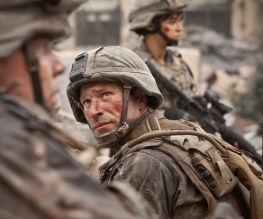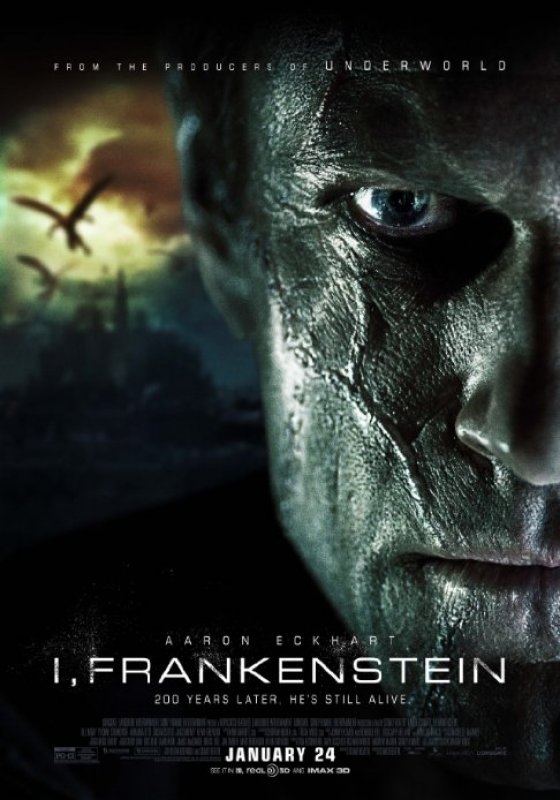Battle: Los Angeles

In the repressive and paranoid atmosphere of 1950s cold war America, alien invasion movies were all the rage. It is easy to see why, serving as they did as perfect vehicles for the fear-mongering and xenophobic propaganda of ‘reds under the bed’ McCarthyism. But even before the cold war had ended the scenario had lost currency with the movie-going public and for the back-end of the 20th century the alien invasion movie was to take a back seat. More recently, however, the thematic and technical innovations of films like District 9 and Cloverfield have revitalised the genre. And so, in 2011, this is the promising context into which steps alien invasion epic Battle: Los Angeles.

Battle: Los Angeles begins with a meteor shower. We quickly learn that this meteor shower is not, in fact, a meteor shower but a horde of hostile, bionic Aliens; Aliens who are intent on sucking Earth dry of its natural resources, quite literally in this case as they are after our most abundant resource: water.
Before interplanetary war can commence we are flung backwards in time ‘minus 24 hours’ in the name of initial characterisation. These ‘24 hours’ amount to about 15 minutes screen time in which as many clichés are crowbarred into proceedings as you can realistically expect: the young, virgin rookie, the soon-to-be-wed sergeant and the recently retired veteran staff Sergeant with a harrowing past (Eckhart) all feature.
Once these formalities are out of the way the action really begins as our platoon of clichés are airdropped into occupied territory to rescue a number of civilians holed up in a police station. They inevitably meet with some resistance from the aforementioned alien horde and action occurs!

Throughout said action director Jonathan Liebesman employs the use of ‘shaky cam’, presumably to create that tense, on-the-ground realism superbly realised by Matt Reeves in Cloverfield. It worked in Cloverfield because it helped create suspense and a sense of intrigue as well as a disorientated confusion. Suspense and intrigue are notably absent from Battle: Los Angeles. Instead the forced first person perspective of shaky cam which, coupled with the reality of modern warfare, creates a certain distance between the warring factions. It’s a distance which is rarely bridged, save by bullets, and ultimately has the effect of giving the antagonists even less presence than is usually afforded to CGI characters. The shaky cam sequences essentially give you a first person perspective on what it’s like to be shot at from the middle distance by 2-dimensional CGI aliens. It’s an experience comparable to watching someone else play a computer game, complete with the gimmicky ‘crosshair lens’ effect.

Off the battlefield things proceed pretty much as you would expect with many of the main plot developments being ‘borrowed’ from 90s blockbuster hit Independence Day. Battle: Los Angeles could well have done with ‘borrowing’ a lot more from Independence Day, some script editors for example.
Even Eckhart, someone who is obviously capable, struggles with the dross he has been given. Most notably when his character finally confronts the tragedies of his past and laments “They’re dead. I’m here. Like the punch line of some bad joke”. Or, indeed, like the plot of some bad movie.
Battle: Los Angeles is many things: boring, derivative and cliché-ridden – like so many other Hollywood blockbusters. But by far the worst thing about Battle: Los Angeles, the thing that makes it uniquely terrible, is the message it imparts: the only way to honour the dead is to keep fighting. Somewhere behind the chest-thumping American patriotism, Independence Day sought to remind us of our shared humanity. Battle: Los Angeles, on the other hand, instructs us in the glory of death and war. It’s a message that leaves a sour taste and makes the 1950s cold war lessons in xenophobia seem positively benign.





Recent Comments